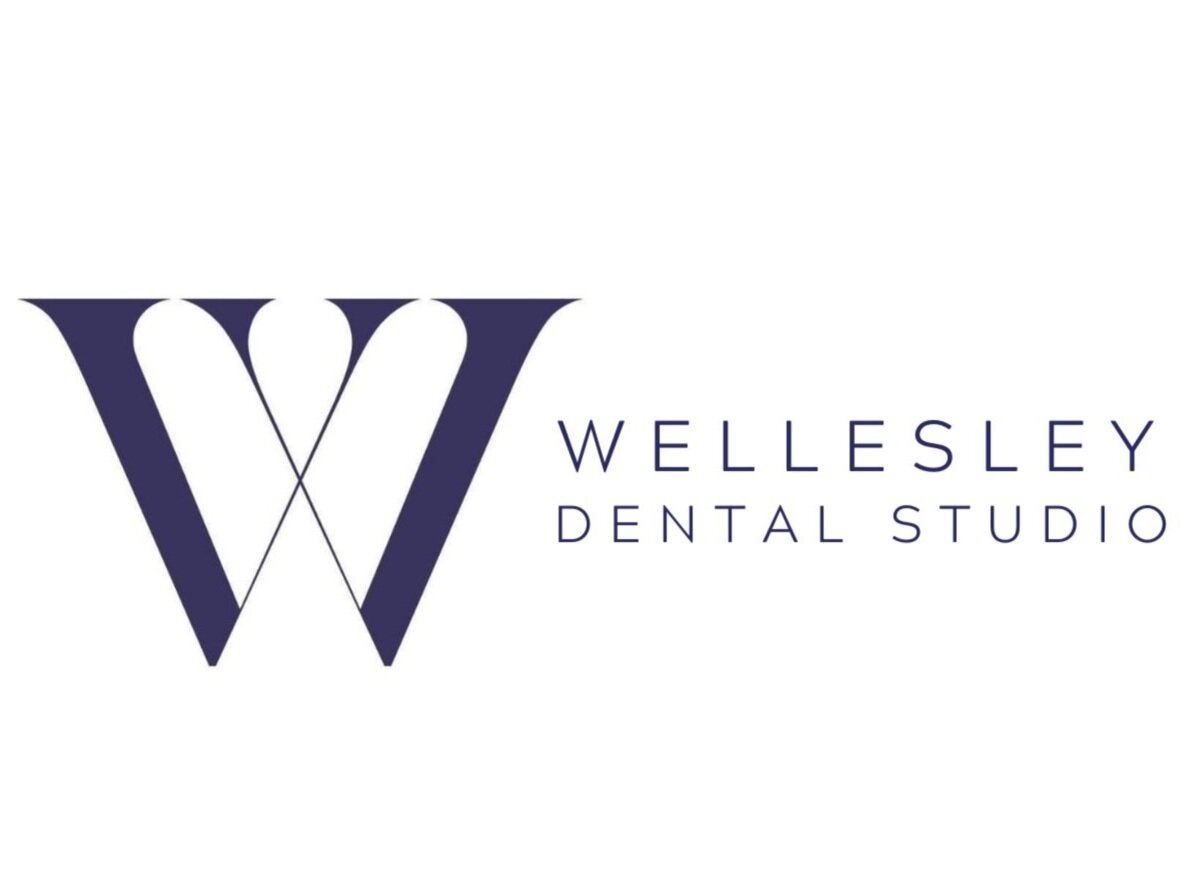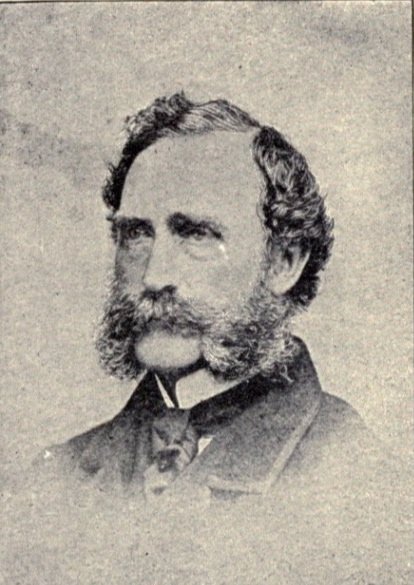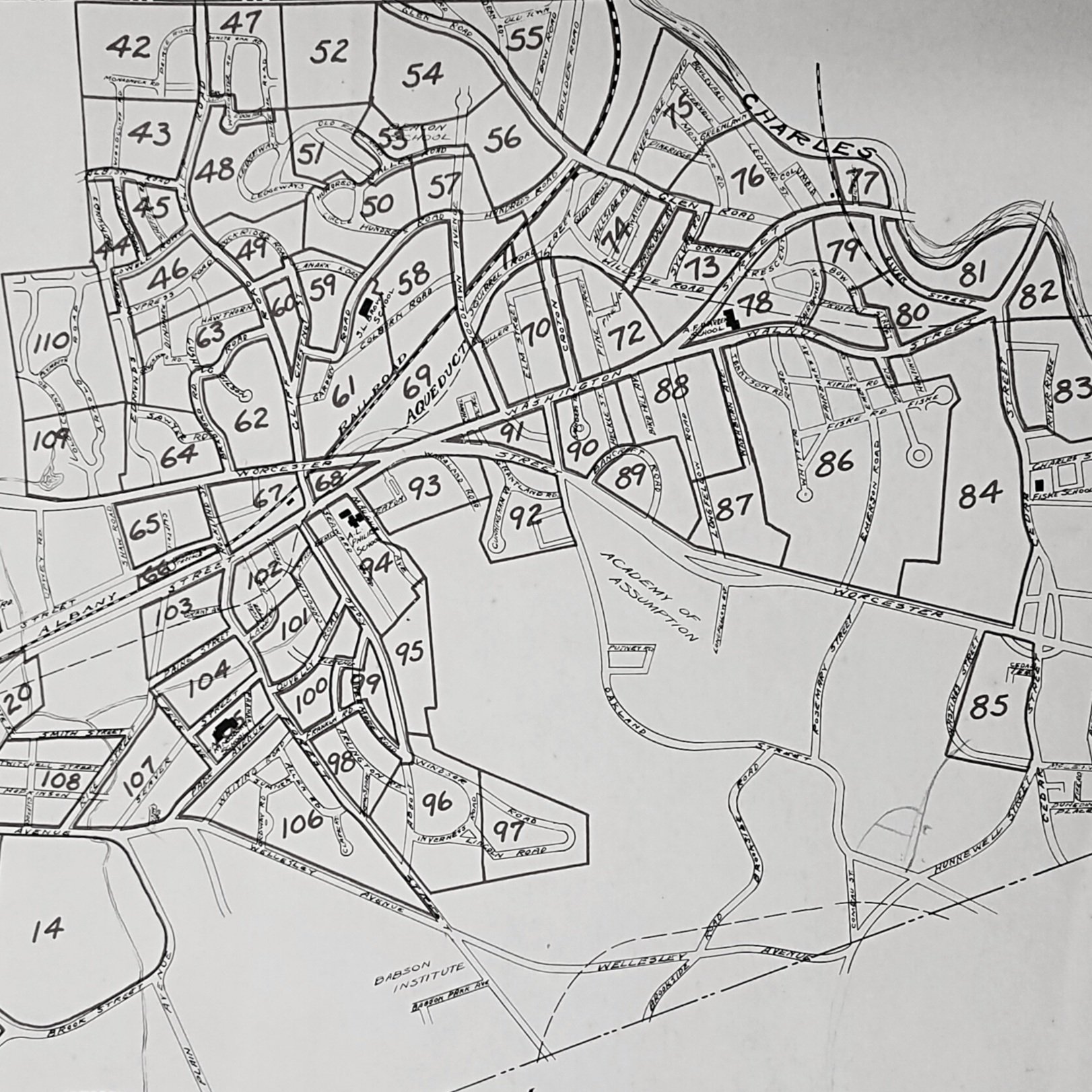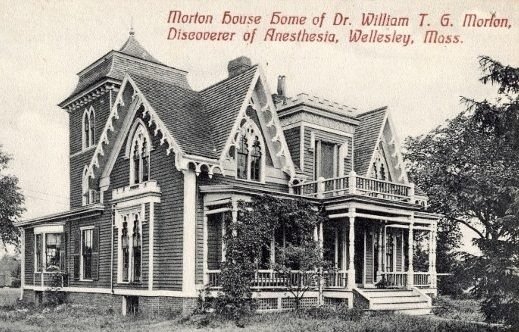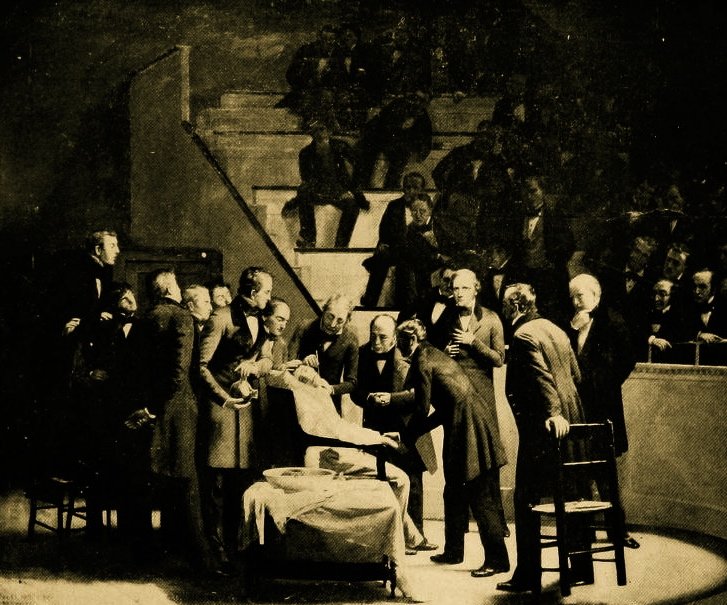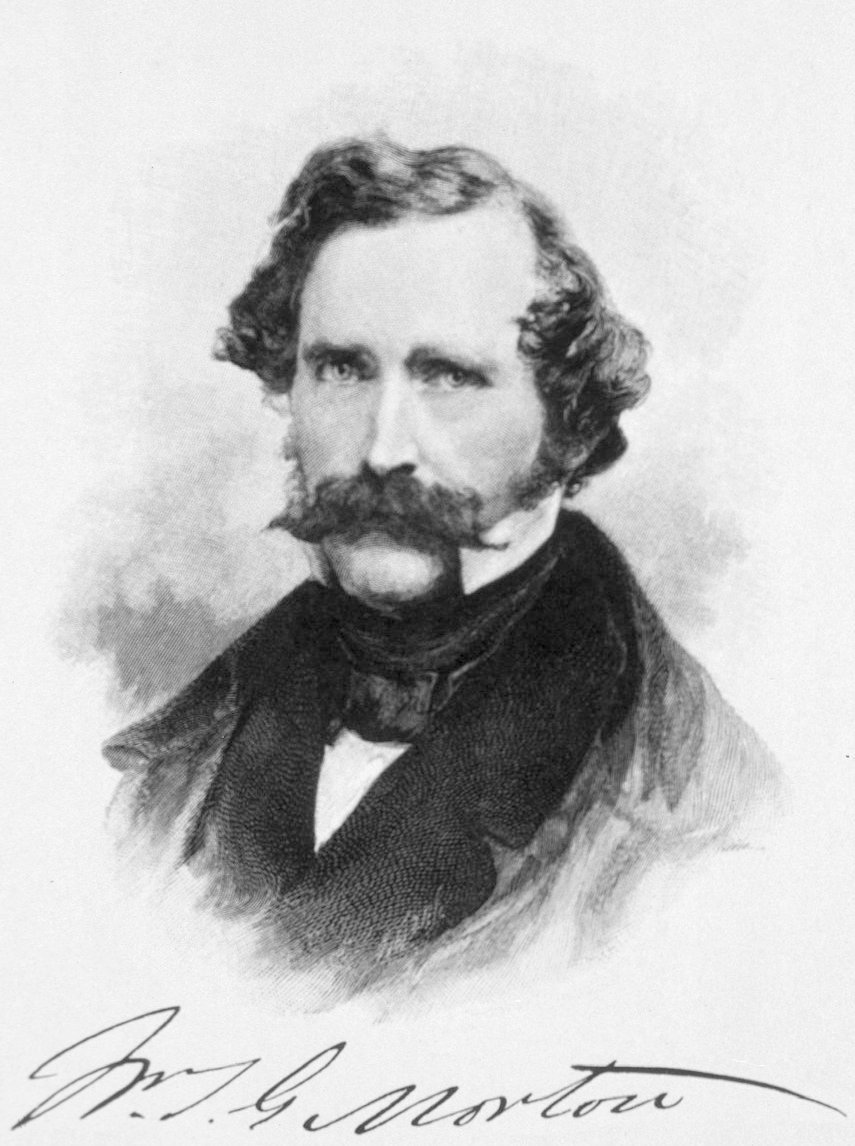Dr. William Morton’s Legacy
For thousands of years, people had no alternative to alleviate the issues surrounding being conscious during surgical procedures and complex dentistry beyond the hope that ingested opiates and alcohol might dull the associated pain enough to make patients comfortable.
Imagine the relief when an anesthetic that safely rendered patients unconscious before surgery was discovered in the mid-1800’s!
Dr. William T.G. Morton was a dentist who lived and practiced from his home “Etherton Cottage”in Wellesley at the time of this groundbreaking medical discovery which he quickly began to employ to his patient’s benefit.
Given that much of the practice of dentistry was still the domain of barbers, and that the concept of dentistry as part of healthcare was in its infancy, it was no small thing that on September 30, 1846, Morton performed a painless tooth extraction after administering ether to a patient. The results seemed to be a miraculous feat by the standards of the day.
Upon reading a favourable newspaper account of this “painless extraction”, Boston surgeon Henry Jacob Bigelow arranged for a now-famous demonstration of ether as part of a surgical procedure on October 16, 1846 at the operating theatre of the Massachusetts General Hospital. This operating theatre is now a space now know to healthcare as The Ether Dome, which is still a worldwide attraction to the Boston area.
Dr. Morton’s son, Dr. William James Morton ultimately was a pioneer in the emerging science of x-ray technology which simply shows how vital a family the Mortons were to the continuing advances made in ensuring human health.
The practice that the senior Dr. Morton founded on October 2nd of 1873, after changing hands several times (through notable dentists like Dr. S. Bayer) is now known worldwide as Wellesley Dental Studio.
Etherton Cottage has gone from its relatively humble beginnings as a home and dental office to become Wellesley Town Hall.
